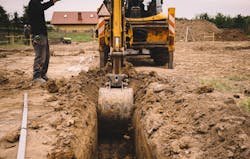How Eminent Domain May Be Used to Respond to Climate Crises
The U.S. government has historically seized private land and property for public use through eminent domain, a controversial legal principle that has resulted in the demise of predominantly Black communities and low-income neighborhoods. In a worsening climate crisis, eminent domain may be used more frequently, but this time around, for the common good.
In the coming years, climate change could make some communities unlivable, and according to Forbes, governments will use eminent domain to relocate at-risk households. One example is the U.S. Army Corps of Engineers flood mitigation policy, which requires local governments to use eminent domain to relocate households in flood-prone areas in the event of an emergency as a condition for receiving federal funding for flood mitigation efforts.
Governments may also use eminent domain for small initiatives, like building bike lanes or restoring flood-absorbing wetlands. In 2013, Boulder, CO, suffered a devastating flood that destroyed property and put residents at risk of drowning. To prevent future flooding catastrophes, the city used eminent domain to build the Wonderland Creek Greenway. The greenway includes a flood-absorbing irrigation ditch paralleled by a bike trail that connects surrounding neighborhoods.


